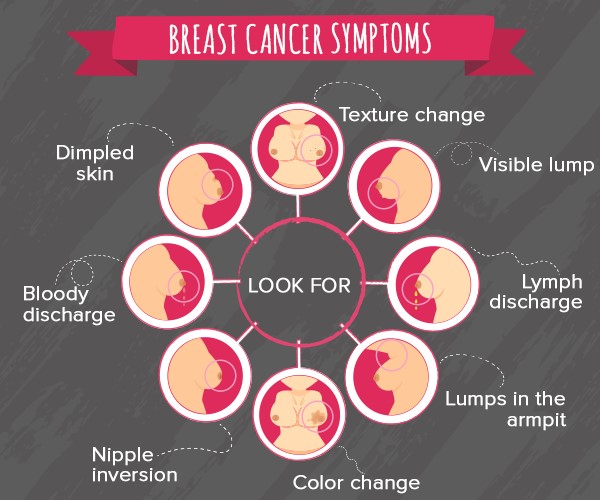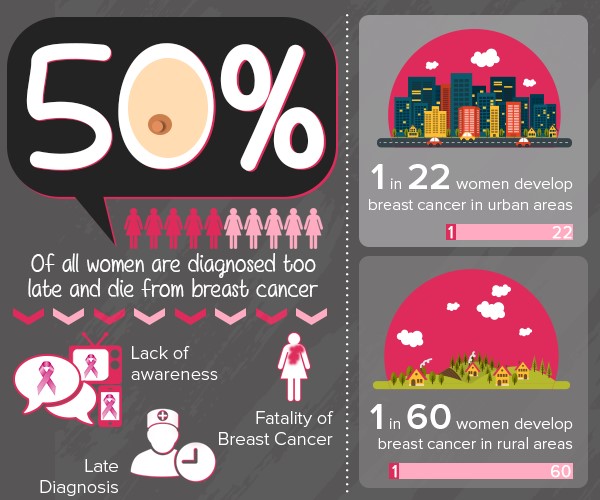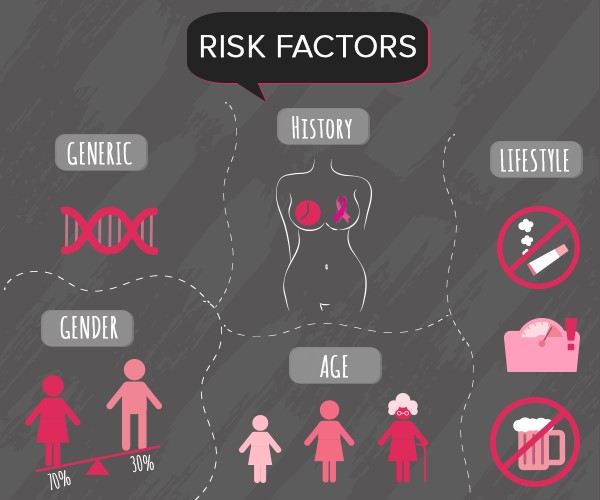Breast Cancer Symptoms
The Battle with Breast Cancer
Cancer occurs when cells of your body start growing out of control. These cells can form a tumor usually, which can be felt as a lump or can come up on an X-ray. This tumor is cancerous (malignant) if the growth in cells affects tissues in the surrounding area (invade), or even spread to various distant parts of the body (metastasize). Breast cancer can affect women and men, but is much rarer in men (and just as dangerous).
There are numerous ways in which symptoms can come up with breast cancer, and regular screening and check-ups are needed to keep a look out for symptoms.
Some of the warning signs which can act as common symptoms for breast cancer are:
- Lumps in the breast or armpit (underarm)
- Nipple being pulled in
- Sensations of pain around the nipple area
- Discharge from nipple (excluding breast milk), with the inclusion of blood
- Changes in the shape or size of the breast
- Swelling of part of the breast or thickening
- Dimpling or irritation of breast skin in the area
- Flaky skin or redness in the nipple area
- Generally, pain around in breast area
Not all lumps are symptoms of breast cancer
- Several conditions can lead to lumps in the breast (including cancer).
- Most lumps, however, are caused by medical conditions other than cancer.
- Two of the most common causes of breast lumps are cysts fibrocystic breast condition.
- Cysts are minor, fluid-filled sacs that developed in the breast.
- Fibrocystic breast condition brings up changes in the breast which are noncancerous and makes the breasts lumpy, sore, or tender.
In India, 1.45 Lac new cases and more than 70,000 deaths for breast cancer were reported in 2012. 1 in 28 women is more likely to have breast cancer in her lifetime, overall. Urban areas see increased rates of 1 in 22 women, while in rural areas, this number drops to 1 in 60 women.
50% of all women who are diagnosed with breast cancer are diagnosed too late and die from breast cancer. Several factors lead to a late diagnosis, including primarily a lack of awareness of symptoms of breast cancer or even the fatality of breast cancer.
Certain risk factors increase chances of breast cancer, and can develop before observable symptoms:
- Women are at a greater risk of breast cancer than men, and can be attributable to exposure to hormones such as estrogen and progesterone.
- Breast cancer risk increases as you age. The average age of patients with breast cancer was 45-50 years, according to a study in North India.
- Family history of cancer increases the risk of breast cancer, especially if family members were diagnosed with breast cancer at a young age.
- Previously having breast cancer in one breast can lead to the development of breast cancer in the other breast.
- Some rare gene mutations and genetic factors have been observed in people with breast cancer, most commonly BRCA1 and BRCA2 genes.
- The occurrence of menstrual cycles before age 12 or menopause at an older age has increased risks associated with breast cancer.
- Lifestyle related risk factors include being pregnant, obesity, intake of hormones, exposure to radiation, lactation, and consumption of alcohol.
Checking for symptoms of breast cancer must be actively done regularly for early detection and fast treatment. The most common symptom of breast cancer is the formation of a lump or a new mass in the breast. If a hard mass combined with irregular edges is felt, chances are it is likely cancerous.
You can see all the medical tests for breast cancer here: https://www.lalpathlabs.com/test-for-breast-cancer.


















